Howdy Biologists! I spent the first half of March visiting family in Portugal. The daytime was spent socializing and being lazy, while night times were largely spent looking for salamanders! The property, filled with springs, pools, and creeks, yielded multiple nights of triple digit salamander counts.
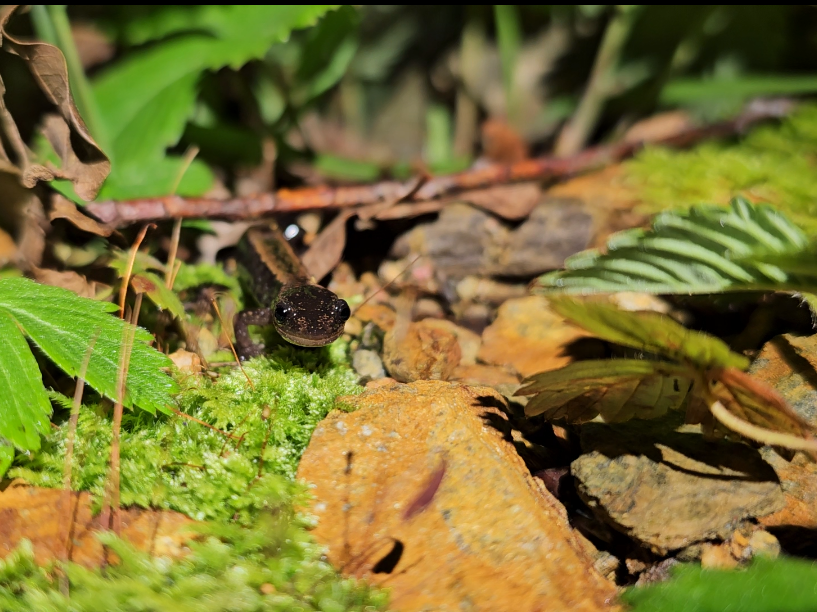
Globally, salamander biodiversity is concentrated in the Appalachian region of North America. In fact, its a big reason I moved Learn Adventurously to North Carolina in the first place. However, we find species of Salamander throughout Europe as well as Northern and Eastern Asia.
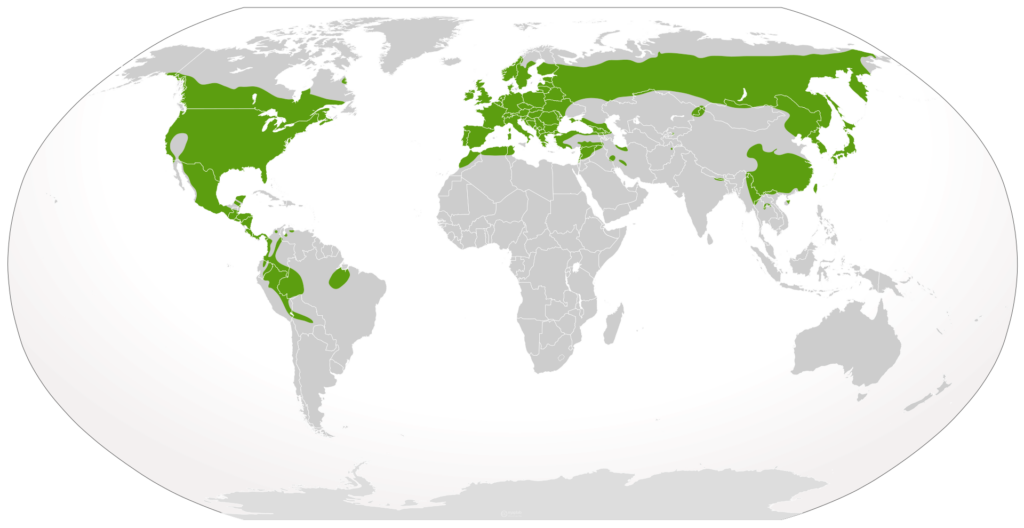
Interesting distribution right? The ~800 species of Salamander are mostly confined in the northern hemisphere. However, their range is separated by the Atlantic ocean, which split ~150 million years ago. While some groups such as Bolitoglossa, entered South America, that is a relatively recent colonization.
What’s fascinating, is that pattern of a northern hemisphere range is actually somewhat common. And its found in taxa with extremely different evolutionary histories.
For example, here is the global distribution of pine trees, Pinus spp., which arose ~150 million yeas ago.
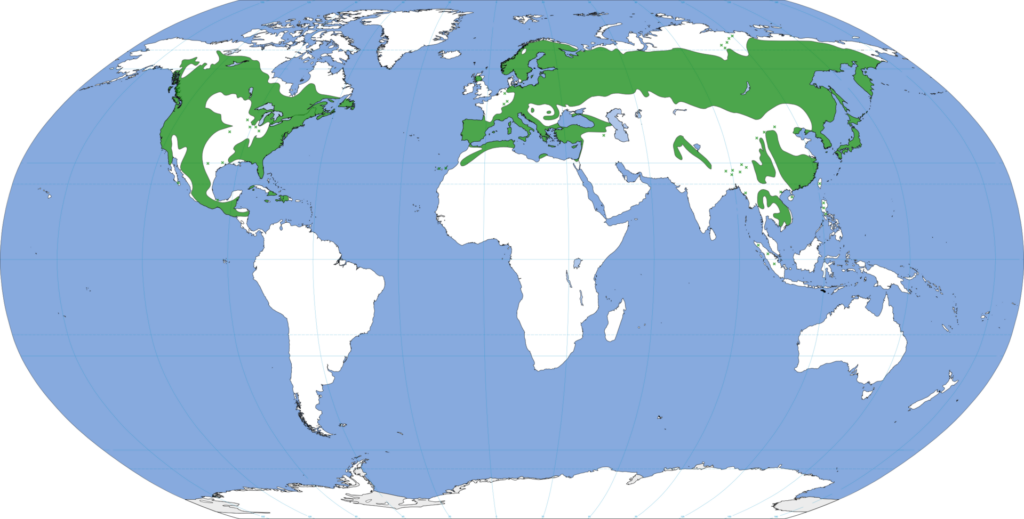
We can also look at the historical range of Gray Wolves before extirpation. Mammals arose ~200 mya with Canidae about ~50 mya. Long after the breakup of Pangea. Yet, we see this single species, ~1 million years old, distributed throughout the northern hemisphere.
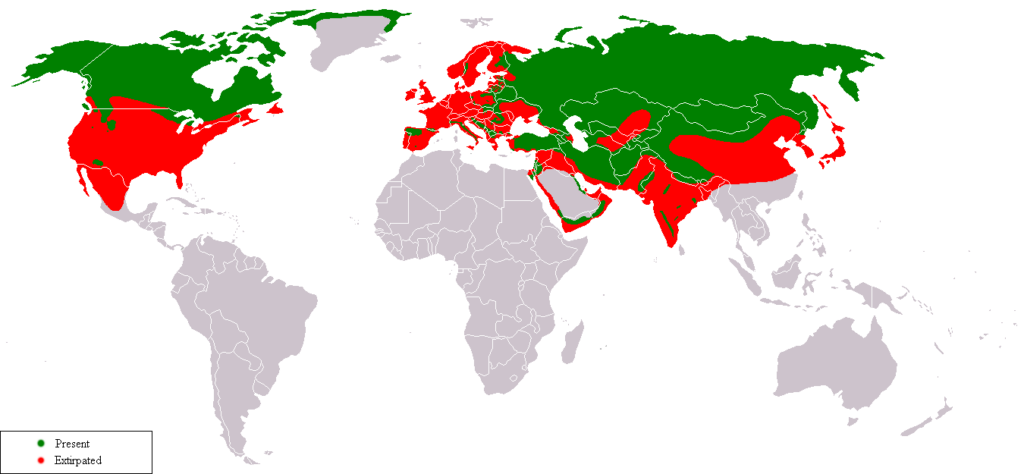
However, some of the most interesting examples are those that aren’t spread across the entire hemisphere. For example, the Chicken of the Woods fungus (Laetiporus sulphureus), found in the Eastern US and Europe as well as South Africa. (Cool paper here). I expected this distribution to be a non-native distribution, possibly spread by colonization starting in the 1400’s. However, the paper linked earlier claims they may have been an originally widespread species that stretched to East Asia. This allowed the taxa to cross into North America via the Bering land bridge. Then populations in East Asia and Western North America went extinct following severe climate shifts and/or the lost of a tree host species. The below range would then be the result of survivor bias!

While there are multiple historical connections between land masses, such as the Bering land bridge between East Asia and North America, I think that statement is a bit dismissive of the entire story. There were historical connections yes, but how those connections influenced wildlife is not standard across the tree of life.
An emerging ocean is much less of a barrier to a fish than it is a deer. A forming mountain range will impact the dispersal of salamanders very differently than the dispersal of birds.
Further, much of these patterns are not explained solely by temporary land bridges, rather tens of millions of years of conjoined supercontinents, massive climate shifts, as well as, shifting land masses and the formation of all the geography we see today.
So then, why are so many taxa constrained to those continents in the northern hemisphere?
Its a bird. Its a clade. Its a supercontinent!
You may be familiar with Pangea, the 300 million year old giant landmass famous for its association to all manner of dinosaur. However, Pangea didn’t simply move neatly into the 7 continents we see today. Like all things in biology, it was a process.
Pangea was a super continent, or a landmass composed of multiple continents. However, Pangea itself contained 2 other super continents: Laurasia and Gondwana. These super continents collided to form Pangea ~300 mya, and existed for a ~100 million years before ultimately breaking apart!
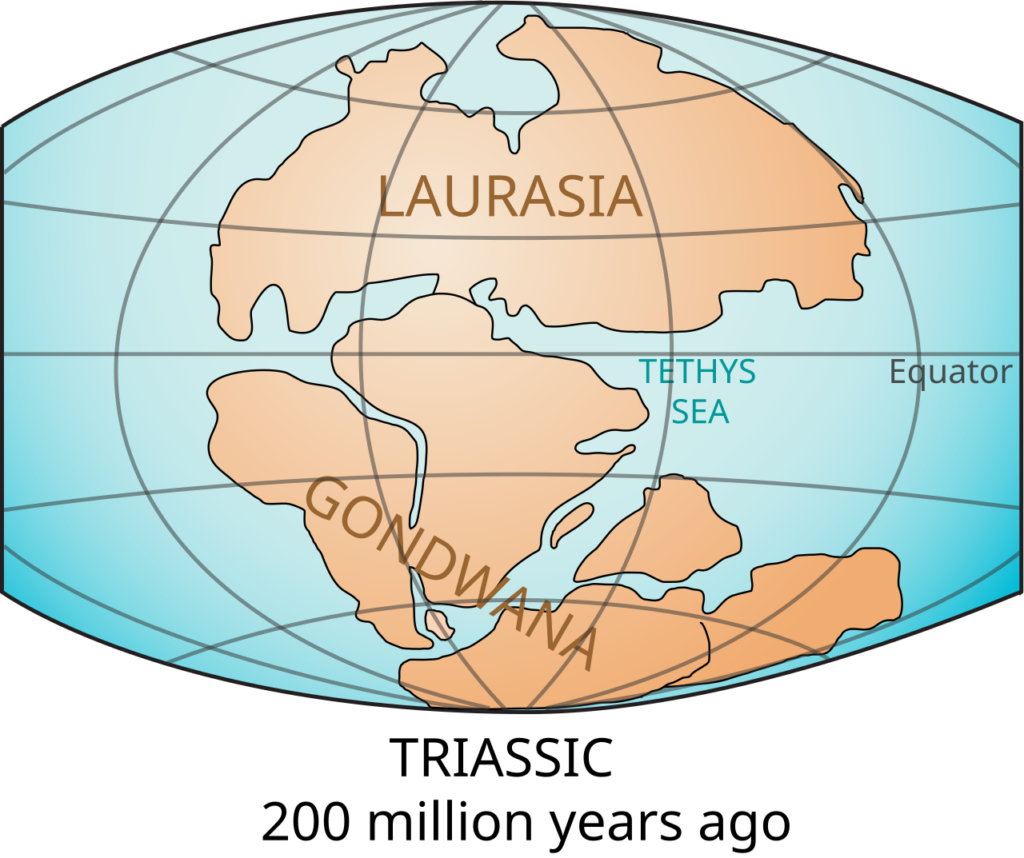
However, each supercontinent has their own distinct history. Laurasia formed ~325 million years ago, composed of the modern day continents Europe, North America, and Asia (excluding peninsular India). Laurasia ultimately fragmented into North America and Eurasia when the Atlantic ocean was formed ~150 years ago. Additionally, Laurasia experienced long periods of submergence, with up to 40% of the super continent found below the ocean waters.
In contrast Pangea’s southern half, Gondwana, is much older, larger, and was not submerged to the same degree as Laurasia. Gondwana formed ~700 million years ago and was composed of modern day South America, Africa, peninsular India, Australia, Antarctica, the Arabian Peninsula, and New Zealand. The fragmentation into its modern day components is rather complicated.
Antarctica, Australia, and India split from Africa/South America ~180 mya. ~100 mya those three blocks then fragmented even further. Meanwhile, South America and Africa split from one another ~150 million years ago. Although, there may have been some limited connections between the 2 landmasses with Antarctica.
A quick note. I’m using rough estimates for the timing here. In reality, each date provided is a range of values based on our best estimates. Further, what landmasses were part of what super continent or not also changes dramatically with time. See this example for the drift of peninsular India into Asia ~100 million years ago. If you want exact dates of major events, I usually defer to this paper. Further, If you just want rough dates and a great visualization, I highly recommend this tool from BioInteractive. It was invaluable during my Masters.
This is Biogeography
The field I am most interested in at the moment is biogeography – the study of how and why taxa are distributed the way they are. By studying these ranges and how they shift, we can uncover the processes that gave rise to evolution. We can see how species respond to climatic shifts and dramatic changes in their landscape. Indeed, biogeography studies the stories of evolution and how the physical Earth influenced the species we see today.
I originally thought I could cover just one story in a single newsletter. However, I quickly realized there were too many examples I wanted to talk about.
- Pine tree sky islands caused by glaciers.
- How Japanese Giant Salamander’s closest relative is the hellbender in the Eastern US
- Why forests in Appalachia and China are surprisingly similar
- How we detangle the echoes of Laurasia vs echoes of colonization
- The invasion of Mammals from Gondwana
- The repeated rejoining between South and North America through the Panama Canal
- The migration of turtles from South America to Australia through Antarctica
- Jungles in the Artic Circle – How historical climate influences modern species
Here’s what I’ve decided to do. This is the first entry in a newsletter series titled Tectonic Echoes. I am going to focus on the evolutionary legacy of Laurasia and Gondwana. How the terrestrial world splitting into 2 provided an incredible series of events that impacted the evolutionary history of nearly all life on this planet.
I’ll keep all the entries together for easy reading here on Learn Adventurously. However, if you want to subscribe, you can get the full blog post straight to your inbox.
In next week’s post, ill give a more thorough overview of Laurasia, and how major events shaped the evolutionary history of organisms we see today.
You can support the creation of this free material by joining the LAB.
